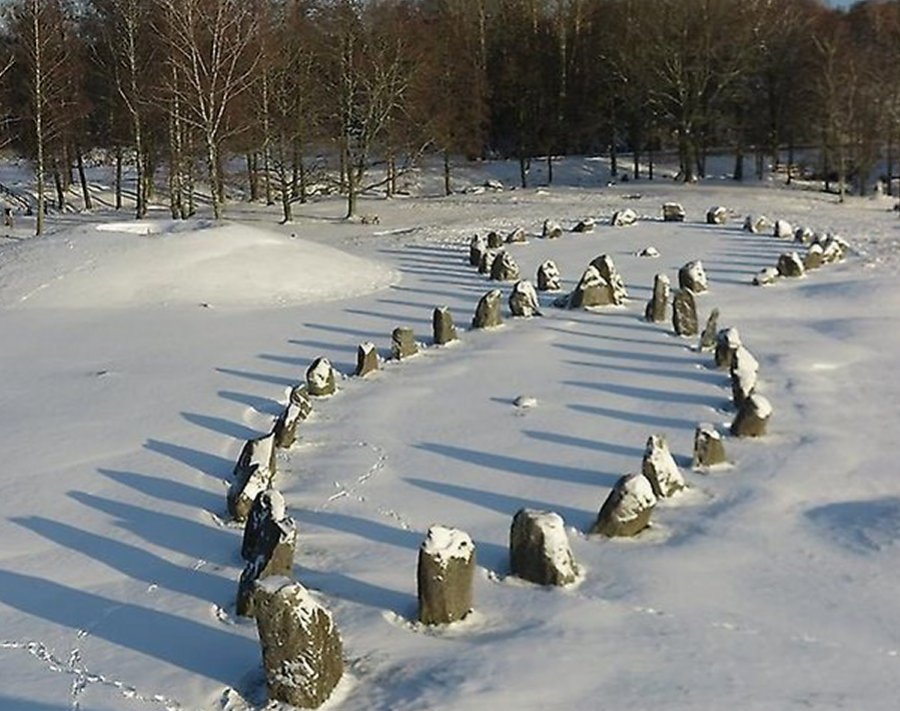Anundshög Burial Mound: One Of Sweden’s Richest And Largest Sacred Ancient Sites
A. Sutherland - AncientPages.com - Anundshög is a burial mound from about 500-700 AD; it is 9 meters (30 ft) high and 60 meters (200 ft) wide, and this is the largest burial mound in Sweden.
Anundshög, located near Västerås in Västmanland, Sweden, contains 12 mounds, ten stone circles, 14 standing stones, and one imposing rune stone. There are also five stone ships of various sizes, the largest of which is 53 meters long and 16 meters wide, in the vicinity of the mound.
Image credit: Anundshög
Many believe the area was a significant center of royal power during the Iron Age and was also important around the 1300s. Anundshög was a part of Eric Street (in Swedish: 'Eriksgata'), and several of the stones in the area mark this traditional path through which the chosen king rode past with his escort to get his royal power confirmed by the people.
Many people participated in the building of the Anundshög burial mound in Sweden. It was made of clay and used to burn the dead, whose remains were covered with a cairn of stones, turf, and soil. The remains around Anundshög clearly show that the area was the core of a prestigious power center during the Iron Age.
Although the site contains many graves, people report the positive energies of the place and several healing areas (one of them is the stone ship).
It seems that in early medieval times, someone deliberately tried to wipe out the power center and weaken its importance. The stone ships were destroyed, and a runestone was overthrown.
The original name of the site is not preserved and remains unknown. During the Middle Ages, the site's name was replaced, and since then, all know it as 'Anundshög.'
Left: The runestone at Anundshög has a pattern and a runic inscription, different from other runes in Sweden. Image credit: www.anundshog.se Right: Image credit: Christer Johansson - CC BY-SA 2.5
Were the burial mound and its name associated with the legendary Swedish king Anund ('trail-blazer) Bröt-Anund or 'Anund the Land Clearer' who reigned during the early 600s, or did the name originate from the large runestone at the site?
Anundshög site has 11 smaller burial mounds, most of which were looted a long time ago; there are also ten stone circles between 6 to 30 meters in diameter.
The damage to the site during the 1600s could be related to the advent of Christianity when similar sites were no longer accepted.
Researchers restored four of the five ships, and the fifth ship setting is still to recover.
"Folkvid raised all of these stones after his son Heden, Anund's brother. Vred carved the runes..."
The runestone at Anundshög has a pattern and a runic inscription, different from other runes in Sweden.
"Folkvid raised all of these stones after his son Heden, Anund's brother. Vred carved the runes..."
A man named Folkvid ordered the construction of the stone ships in the 1000s and helped to construct them.
In the middle of the runestone, a man and a woman are depicted, and according to the inscription:
+ fulkuiþr + raisti + stainn + þasi + ala + at + sun + + sin + hiþin + bruþur + anutaR + uraiþr hik + runaR
The runestone was overturned and moss-grown back in the 1660s, according to Runic Inscriptions 'Ransakningarna' 1667.
Tibble maze, used for all kinds of rites and dated to 100's, is located only 800 meters from Anundshög; formed of 2000-3000 stone, it represents one of Sweden's labyrinths, usually used in fertility rituals or to contact the spirit world with the help of shamans, or medicine men.
Written by – A. Sutherland AncientPages.com Staff Writer
Updated on January 27, 2023
Copyright © AncientPages.com All rights reserved. This material may not be published, broadcast, rewritten or redistributed in whole or part without the express written permission of AncientPages.com
Expand for referencesMore From Ancient Pages
-
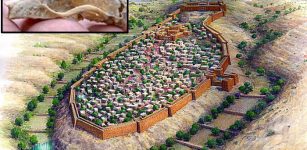 Findings From The First Temple Period Discovered In The City of David Corroborate A Biblical Event
Archaeology | May 4, 2024
Findings From The First Temple Period Discovered In The City of David Corroborate A Biblical Event
Archaeology | May 4, 2024 -
 The Prophecy Of The Rainbow Warriors And Future Of Planet Earth
Featured Stories | Aug 29, 2018
The Prophecy Of The Rainbow Warriors And Future Of Planet Earth
Featured Stories | Aug 29, 2018 -
 Unsolved Old Cherokee Mystery In The Great Smoky Mountains
Featured Stories | Feb 27, 2024
Unsolved Old Cherokee Mystery In The Great Smoky Mountains
Featured Stories | Feb 27, 2024 -
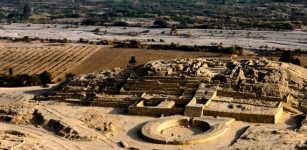 America’s Oldest City Caral Illegally Invaded And Archaeologist Threatened With Death
Archaeology | Jan 21, 2021
America’s Oldest City Caral Illegally Invaded And Archaeologist Threatened With Death
Archaeology | Jan 21, 2021 -
 Will Ancient DNA Unravel History Of The Scythians From Central Asian Steppe?
Archaeology | Mar 29, 2021
Will Ancient DNA Unravel History Of The Scythians From Central Asian Steppe?
Archaeology | Mar 29, 2021 -
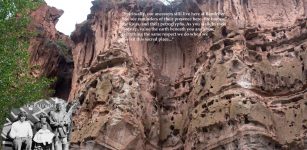 Bandelier National Monument: Unusual Ancient Ruins Of Pueblo People In The Southwest
Civilizations | Jun 30, 2016
Bandelier National Monument: Unusual Ancient Ruins Of Pueblo People In The Southwest
Civilizations | Jun 30, 2016 -
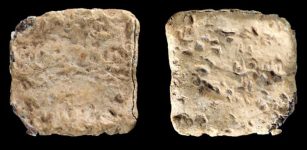 Rare ‘Cursed’ Tablet Predating The Dead Sea Scrolls Discovered On Mount Ebal Could Re-Write History – Scientists Say
Archaeology | Mar 25, 2022
Rare ‘Cursed’ Tablet Predating The Dead Sea Scrolls Discovered On Mount Ebal Could Re-Write History – Scientists Say
Archaeology | Mar 25, 2022 -
 Lada: Jump Over Fire For Goddess Of Beauty, Love, And Marriage In Slavic Mythology
Featured Stories | Dec 11, 2017
Lada: Jump Over Fire For Goddess Of Beauty, Love, And Marriage In Slavic Mythology
Featured Stories | Dec 11, 2017 -
 Neanderthal Extinction May Have Been Caused By Sex, Not Fighting – New Study Suggests
Archaeology | Nov 1, 2022
Neanderthal Extinction May Have Been Caused By Sex, Not Fighting – New Study Suggests
Archaeology | Nov 1, 2022 -
 1,700-Year-Old Roman Bust Excavated In Ancient City Of Soli Pompeiopolis In Turkey
Archaeology | Jul 19, 2018
1,700-Year-Old Roman Bust Excavated In Ancient City Of Soli Pompeiopolis In Turkey
Archaeology | Jul 19, 2018 -
 Lost Kingdom Of Cleopatra – Legendary Lost City Of Heracleion
Featured Stories | Apr 1, 2014
Lost Kingdom Of Cleopatra – Legendary Lost City Of Heracleion
Featured Stories | Apr 1, 2014 -
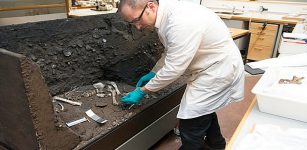 8200-Year-Old ‘Viste Individual’ – DNA Analysis May Shed Light On Early Migration To Norway
Archaeology | Dec 6, 2015
8200-Year-Old ‘Viste Individual’ – DNA Analysis May Shed Light On Early Migration To Norway
Archaeology | Dec 6, 2015 -
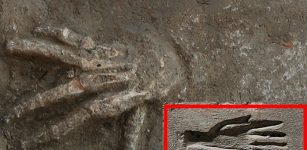 Mysterious Ancient Egyptian Severed Hands Practice Investigated By Scientists
Archaeology | Apr 1, 2023
Mysterious Ancient Egyptian Severed Hands Practice Investigated By Scientists
Archaeology | Apr 1, 2023 -
 Ötzi The Iceman’s Stomach Bacteria And Complex History Of European Settlements
Archaeology | Jan 8, 2016
Ötzi The Iceman’s Stomach Bacteria And Complex History Of European Settlements
Archaeology | Jan 8, 2016 -
 Utsuro Bune: Ancient Extraterrestrial Encounter With A ‘Hollow Ship’ And An Alien Visitor
Featured Stories | Jun 11, 2020
Utsuro Bune: Ancient Extraterrestrial Encounter With A ‘Hollow Ship’ And An Alien Visitor
Featured Stories | Jun 11, 2020 -
 Extraordinary Bronze Age Jewelry Hoard Discovered In A Carrot Field In Switzerland
Archaeology | Oct 18, 2023
Extraordinary Bronze Age Jewelry Hoard Discovered In A Carrot Field In Switzerland
Archaeology | Oct 18, 2023 -
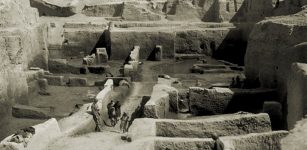 Iraq’s Ancient Kish City Survived The Great Flood – Today It’s Neglected And Lies Buried In Sand
Civilizations | Sep 24, 2015
Iraq’s Ancient Kish City Survived The Great Flood – Today It’s Neglected And Lies Buried In Sand
Civilizations | Sep 24, 2015 -
 Centeotl: Lord Of Maize Who Was Revered Before The Olmecs By All Mesoamerica’s Inhabitants
Featured Stories | Feb 20, 2024
Centeotl: Lord Of Maize Who Was Revered Before The Olmecs By All Mesoamerica’s Inhabitants
Featured Stories | Feb 20, 2024 -
 Unexplained Accounts Of Mysterious Fires – ‘Burning’ Questions Remain Unanswered – Part 1
Featured Stories | Aug 2, 2019
Unexplained Accounts Of Mysterious Fires – ‘Burning’ Questions Remain Unanswered – Part 1
Featured Stories | Aug 2, 2019 -
 Ancient Underwater ‘Lion City’ Rests Beneath The Thousand Island Lake
News | Feb 11, 2014
Ancient Underwater ‘Lion City’ Rests Beneath The Thousand Island Lake
News | Feb 11, 2014

